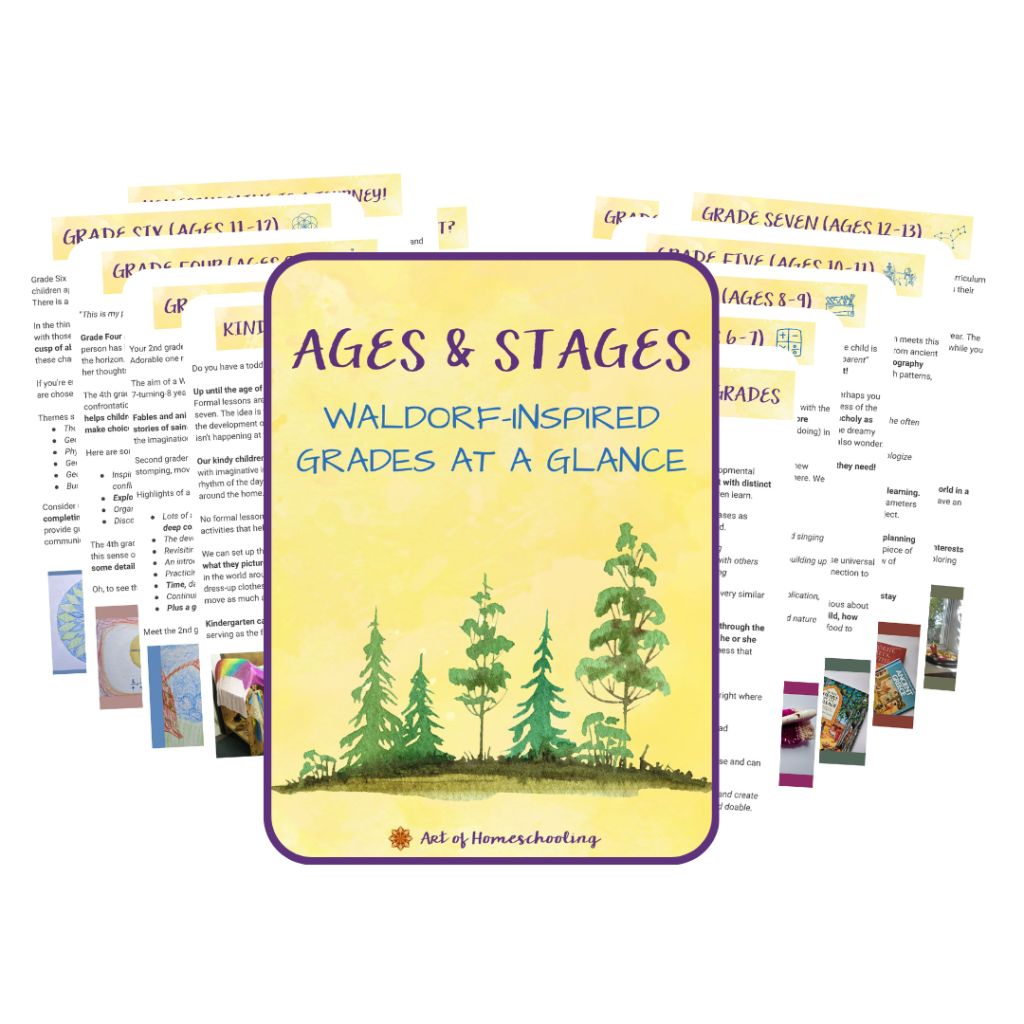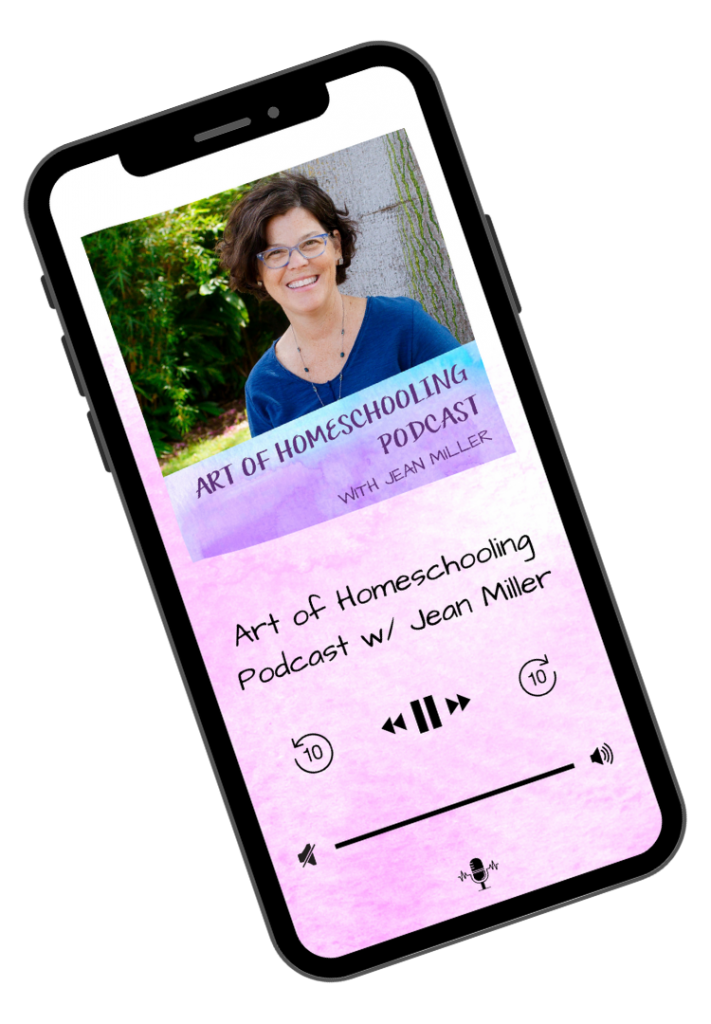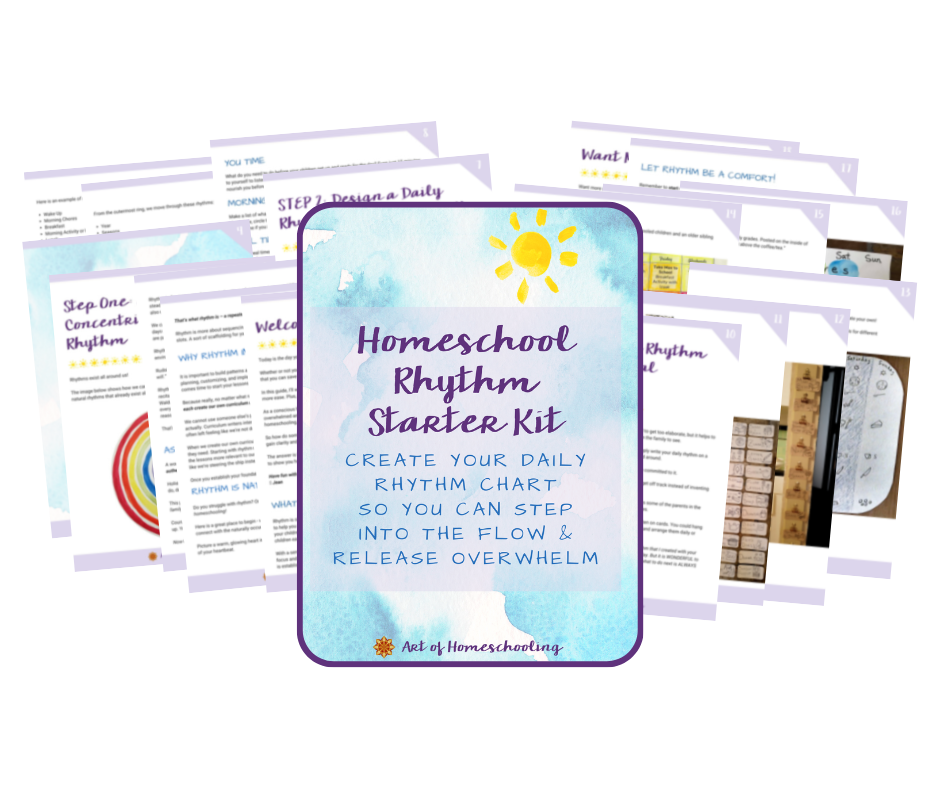Episode 173
How has your educational philosophy informed your decision to homeschool? Homeschooling is an amazing opportunity to share the world with your kiddos in a hands-on, holistic way. And when it comes to teaching and learning, there’s no substitute for hands-on experience.
After going to graduate school to study education and then teaching public high school, I knew at the beginning of my homeschooling journey that I wanted a hands-on, holistic, and experiential homeschool environment for my children.
Educational research has proven that children learn best when they’re engaged as active learners rather than passive learners.
That’s right…There’s no substitute for experience!
In this episode of the Art of Homeschooling podcast, I’ll explore the idea of experiential learning ~ what it is, why it’s so effective, and how this philosophy of education has evolved.
So listen in and follow along with the show notes below for links, quotes, and highlights from this episode.
Tell me and I forget, teach me and I may remember, involve me and I learn.
~Benjamin Franklin
There’s No Substitute for Experience
As an educational philosophy, experiential learning is defined as “a teaching philosophy that informs many methodologies in which educators purposefully engage with learners in direct experience and focused reflection in order to increase knowledge, develop skills, clarify values, and develop people’s capacity to contribute to their communities, ” according to the Association for Experiential Learning (AEE).
Isn’t this a great description of our aims as homeschoolers? To engage our children in direct experiences in order for them to develop skills, clarify values, and develop their capacities to contribute to their families and communities.
To me, the homeschool setting is even more perfectly suited to experiential learning than a classroom setting.
Many educational methods have experiential education at their roots, from Montessori to Waldorf and Charlotte Mason.
Maria Montessori was an Italian medical doctor who opened the first “house of children,” Casa Dei Bambini, in 1907 in Rome. She developed her method based on scientific observations of children with mental disabilities initially, and later with children from low-income families.
Rudolf Steiner was a German philosopher and educator who founded the first Waldorf School in Germany in 1919 for the children of the workers at the Waldorf-Astoria Cigarette Factory.
Both the Montessori and Waldorf approaches were developed in response to the practice of “industrialized schooling” in the early 1900s. This is the practice of identifying, at a very young age, the occupation a child would pursue, and then training them solely for that occupation.
But both the founders of the Waldorf and Montessori methods felt strongly that ALL children deserve a complete education. So each of these founders developed a liberal arts approach that was very respectful of the whole child.
Most of all, Steiner and Montessori believed that the hands-on activities children participate in can help spark their interests and engage all aspects of their being.
Learning about the World
Hands-on experiences provide the foundation on which to build understanding and knowledge of the world around us.
When coaching homeschooling parents, I like to put it this way: focus on “the experience before the explanation.” Because there is no substitute for experience.
This simply means we allow children to have an experience before we explain how or why something works the way it does. So that they can ground their understanding in the experience itself.
The Waldorf method builds lessons around experiences that allow children to engage more actively with learning. Activities such as imaginative and descriptive storytelling, music, poetry, drama, painting, drawing, modeling, and movement all help the learning to stick.
“The experience before the explanation” might look like:
- listening to and then acting out a Norse myth
- hiking near local interesting geographic features
- collecting and pressing flowers from a meadow
- observing a physics demonstration
- watching a meteor shower
We can then follow the experience with engaging lively arts through drawing, painting, modeling, or diagramming. And finally, by revisiting the learning through writing.
These rich experiences help children to build knowledge of the world. This is also a critical component of reading comprehension as children grow into lifelong learners.
Hands-experiences build connections in the brain for future learning and deep understanding.
Make the Learning More Memorable
Steiner said that the lively arts bring us joy as human beings and help to make the learning more memorable.
Over 100 years later, the research backs that up!
The Decision Sciences Journal of Innovative Education published a meta‐analysis examining over 13,000 articles and studies about experiential learning and concluded that “students experienced superior learning outcomes when experiential pedagogies were employed. Further, learning outcomes were almost a half standard deviation higher (d = .43) in classes employing experiential learning pedagogies versus traditional learning environments. This review definitively, and quantitatively shows the importance of experiential learning activities.”
Here are just some of the benefits that experiential learning can offer:
- problem-solving skills
- personalized learning
- creativity
- motivation & engagement
- memorable experiences
Experiential Learning vs. Discovery Learning
Discovery or inquiry-based learning is another educational method that’s very similar to experiential learning. Here are some important distinctions.
Experiential learning activities are guided by the parent or teacher with a particular purpose. The activities are followed up with reflection and review.
Whereas discovery learning is more open-ended, allowing the child to construct their own meaning from the activities. (Exploring Learning Theories: Discovery Learning)
Naturally, learning happens both ways.
The distinction I like to make for homeschoolers is that during the main lesson time that we plan, we’re focusing on experiential learning. And then our children can have other times of the day when they naturally engage in discovery learning.
Hands-on Homeschooling for the Win!
For the things we have to learn before we can do them, we learn by doing them.
~Aristotle
Dear homeschooling parent, you’ve probably been using experiential learning all along your parenting journey!
I hope these ideas about learning help you to stay the course and continue to bring hands-on experiences to your children throughout their growing years, even into high school, because there’s just no substitute for experience!
To hear more about how I defined my family’s vision for homeschooling, check out Why Are We Homeschooling? How to Write Your Family Vision from the Art of Homeschooling Podcast Archives.
And if you want to experience firsthand how experiential learning works, join us for the Taproot Teacher Training for Waldorf-inspired Homeschoolers every August in northeastern Ohio.

Rate & Review the Podcast
If the Art of Homeschooling Podcast has inspired you, I’d LOVE it if you could rate and review the podcast on your favorite podcast player! Reviews can be left on Apple Podcasts (iTunes), Podcast Addict, or Stitcher.
Or simply pop on over to lovethepodcast.com/artofhomeschooling and choose where you want to leave your review.
And if you want to show your appreciation for the Art of Homeschooling Podcast, you can buy me a cup of tea!
Never Miss an Episode!

Check Out All the Episodes Here




